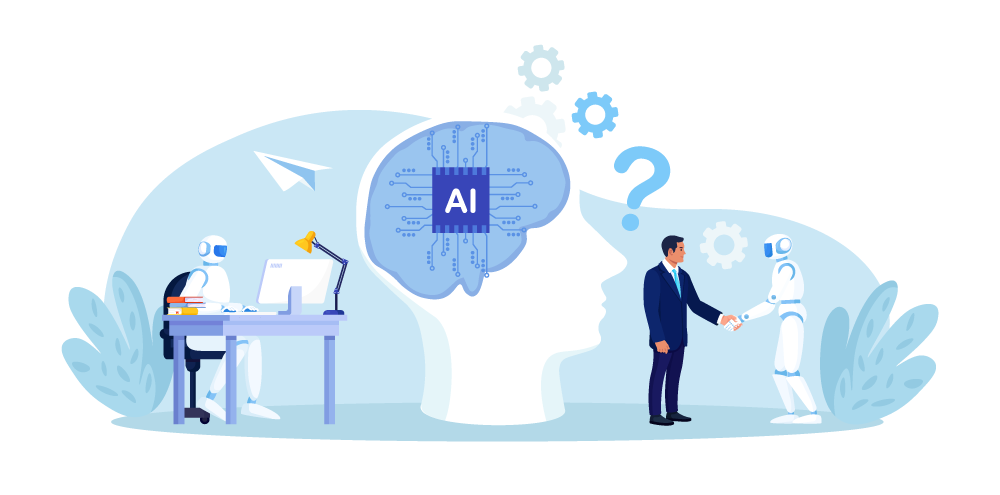Our partners at Jabra took a closer look at AI adoption across the workforce, examining both current and future trends. They conducted research surveying a total of 5,700 people across 13 different countries to understand how workers feel about AI, what they hope to gain from using it, how they plan to implement it, and where there may be gaps in expectations.
With this, Jabra aimed to provide insights to help businesses navigate the complexities of AI integration while fostering a more engaged and resilient workforce. They discovered the following key insights:
 People are excited about AI – but adoption is low
People are excited about AI – but adoption is lowThere is significant enthusiasm for AI; however, actual usage among knowledge workers, as discovered by Jabra, remains low. According to their research, 91% of those surveyed had heard about AI, yet only 27% had implemented it into their work at the time.
Gen Z and Millennials are driving the AI revolution
Leading the way in both AI awareness and usage are Gen Z and Millennials. The gap between these key groups and others underscores the need for effective leadership and training to bridge the divide. Otherwise, there is a risk of creating a two-tier workforce.
AI decision-makers don’t fit the typical technology leader profile
Jabra’s research discovered that a significant portion of AI decision-makers are under 39 and don’t come from IT backgrounds or technology industries, with 80% not in the C-Suite. Making AI-focused decisions requires broader alignment and buy-in, yet those making these choices for AI implementation in organisations are not from the traditional departments typically tasked with such decisions.
Our gateway to AI will be voice
Speaking to generative AI, as opposed to writing prompts, was more popular among those surveyed. This preference increased with seniority (and perceived busyness). With the rise of agentic AI, tools like Microsoft Copilot have gained popularity, along with a preference for voice interaction. Jabra concluded that this insight reflects a desire for AI to function as real-time assistance, helping to minimise busywork and enabling people to focus on tasks that truly matter.
 People want AI to free up more time for creativity, innovation, and strategy
People want AI to free up more time for creativity, innovation, and strategyWorkers want more time for creativity, innovation, and strategy but find themselves bogged down by time-consuming tasks. These can range from writing emails to handling meeting-related tasks (scheduling, attending, following up) and week-to-week planning. The ability to focus and maintain mental clarity is increasingly compromised.
Among knowledge workers surveyed, only 23% reported spending time on creation, innovation, or strategic decision-making for their companies. With AI, the burden of ‘busy work’ could be shifted to help workers concentrate on tasks that directly impact a business’s bottom line.
AI isn’t really going to steal our jobs
Jabra’s survey reflected concerns about AI replacing workers. However, their research noted that only 1 in 10 businesses has plans to reduce its workforce. There is a greater focus on upskilling employees to ensure AI enhances staff capabilities rather than replacing them.
To rest or work more with our reclaimed time?
While AI promises to give workers more free time, opinions on how to use this time vary. Knowledge workers tend to want to upskill themselves, while decision-makers look to increase output and productivity. This disconnect raises questions about managing expectations in an AI-driven future. Just because greater efficiency is possible with AI does not mean that workers or employers will necessarily want to take on more work.
Final Thoughts
Jabra concluded their thought leadership piece by highlighting that businesses looking to harness integrated AI solutions, such as Jabra’s PanaCast 50, can help employees boost their efficiency and wellbeing. By aligning with decision-makers, they can cultivate a collaborative culture where everyone can thrive.
Read more about the Thought Leadership on Jabra's website by clicking the button below.


 People are excited about AI – but adoption is low
People are excited about AI – but adoption is low People want AI to free up more time for creativity, innovation, and strategy
People want AI to free up more time for creativity, innovation, and strategy